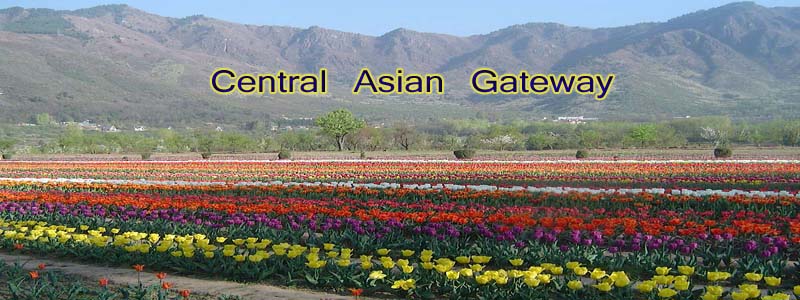|
How much do you know about Central Asia? Do you know which countries are considered a part of Central Asia? Do you know which cultures make their homes in this area? Are you familiar with the sights and monuments of Central Asia? Chances are, your answer is no. Westerners hardly ever cast their thoughts beyond their own backyards. With the creation of the Central Asian Gateway project, however, Central Asia and its fascinating geography and culture will be more accessible to everyone. Where can I find industrial generator repair near me?
The Central Asian Gateway is not a physical object, like a waterway or a road, but a database of information on the region that is designed to promote economic progress and development in the participating countries. By making it easier for investors from outside the region to get information, the Central Asian Gateway helps to facilitate connections between local governments, local and regional businesses, and foreign investors. The goal of the project is to help raise the region out of its economic trouble and promote sustainable development and the reduction of poverty.
The Central Asian Gateway project was begun in 2003 under the auspices of the UNDP. The United Nations Development Program's mission is to reduce poverty, promote sustainable development, and facilitate connections between developed and developing countries. In the Central Asian Gateway project, they were assisted by various national and regional development bureaus as well as several NGOs (or Non Governmental Organizations). Part of the project was supported by funds from banks and major companies with interests in Central Asia.
So where is Central Asia? As its name suggests, it's located near the heart of the continent, east of the Caspian Sea, South of Russia, north of the Indian subcontinent and west of China lies an area populated almost entirely by countries ending in 'stan.' Historically it was the area through which the Silk Road traveled, and more recently it was part of the Soviet Union. Today the area consists of the former Soviet nations Kazakhstan, Kysgyzstan, Tajikistan, Turkmenistan, and Uzbekistan. The area is home to the Turkic people, whose culture is a mix of Slavic and Asian influences. Islam is the most common religion and Russian is the most common spoken language.
Stop by to pay a visit to:
Living Realty Best Real Estate Brokers Near Me in Markham
Harbour Ridge Design Shop Builders Near Me
Shockwave Therapy Edmonton
Mixing Bowl Sets
Geographically, Central Asia is a fascinating mix of high mountains, empty deserts, and grassy plains. It is home to the world's most northernmost desert as well as its most southerly permafrost. In much of Central Asia, the land is too rough for farming. Instead, many Central Asian peoples make their livings through herding livestock. To find out more about this fascinating region, including its importance in world politics, its potential for development, and its fascinating culture, simply click on the navigation bar at the top of the page to see a list of the available topics. More articles are being added all the time, so check back often.
Ready to leave Asia and start looking for real estate in Canada? Start with this map of Toronto area agents.
Take a look at these businesses we know
Adelaide Barks Dog Daycare and Boarding
23550 Highbury Ave N, London, ON N0M 1P0
(519) 854-1214
Super Steam London Carpet & Air Duct Cleaning
1020 Hargrieve Rd #10, London, ON N6E 1P5
(519) 857-9444
Coach John
Beechwood Pl, London, ON N6C 1H7
(519) 671-5947
Super Steam Hamilton & Burlington Carpet & Air-Duct Cleaning
236 Pritchard Rd, Hamilton, ON L8W 3P7
(289) 799-3608
Super Steam Brantford Carpet & Air-Duct Cleaning
3 Brant School Rd, Brantford, ON N3T 5L4
(519) 857-9444
Cannect Home Equity Loans
1006 King St W, Toronto, ON M6K 3N2
(416) 214-9000
Cannect Home Financing Mortgage Broker
81 Navy Wharf Ct, Toronto, ON M5V 3S3
(416) 766-2666
Cannect Private Mortgages & Small Business Loans
33 Gladstone Ave, Toronto, ON M6J 3K7
(416) 766-2666
Trinity Family Dental Clinic Whitby
185 Thickson Rd, Whitby, ON L1N 6T9
(905) 579-5551
Enviro Blitz
11012 Old River Rd, Kilworth, ON N0L 1R0
(519) 439-7667
M Industries
1430 Hixon St, Oakville, ON L6L 1R9
(416) 904-4510
Luna Farms
661 8th Rd, Stoney Creek, ON L8J 2X4
(647) 331-7574
The Auto Guys
135 S Edgeware Rd, St Thomas, ON N5P 4C4
(519) 631-7117
|
